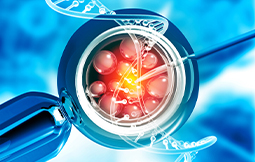
In today’s time In Vitro Fertilization is one of the most common and effective techniques that can help in improving your chances of getting pregnant.
In today’s time In Vitro Fertilization is one of the most common and effective techniques that can help in improving your chances of getting pregnant. The process involves fertilizing an egg outside your body, in a laboratory, and then implanting it in your uterus. In order to make IVF successful, your participation and the participation of your physician, nurses and embryologists require close coordination. The timing of medication is critical, and close monitoring with ultrasound is required.
Some symptoms of IVF are :-
After you decide you go for the process of IVF, you will meet with a nurse and you will receive a medication log and a calendar outlining the treatment. In many cases, oral contraceptive pills (OCPs) will be prescribed to you in the cycle, prior to the treatment. The purpose of the OCP is to reduce the chances that an ovarian cyst will be present at the time of the treatment.
Before starting the cycle of IVF, you and your partner are likely to go for various screenings, including :-
There are 5 steps involved in IVF:-
Pregnancy occurs when the embryo implants itself in the uterine wall. This can take 6 to 10 days. A blood test will confirm if you’re pregnant.
After the embryo is transferred, you can resume your normal daily activities. However, your ovaries may still be enlarged. Consider avoiding vigorous activity, which can cause discomfort. If you develop moderate or severe pain after the embryo transfer, you should contact your doctor. He or she will evaluate you for complications such as infection, twisting of an ovary (ovarian torsion) and severe ovarian hyperstimulation syndrome.
Like all medical procedures and surgeries, IVF also has some risks and possible side effects. These include:
Copyright © 2025 IMA | All Rights Reserved.